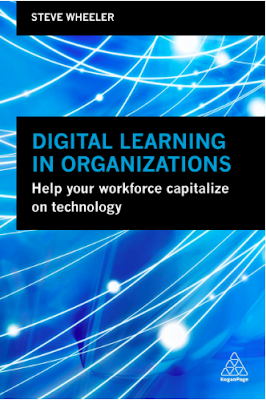Separation and connection
The Internet has taken the act of human contact and amplified it exponentially. We are witnessing a time where a mobile world wide web of connections is proliferating, and in which social mores, human relationships and communication conventions have been irrevocably changed. This is not hyperbole. At the time of writing, Facebook boasts over 845 million subscriptions and this statistics grows each month. What is even more remarkable is that these 845 million user accounts have so far generated over 100 billion connections. These connections exist not only in links between 'friends', but also in fan page membership, tags, 'likes' and comments, image uploads (at least 250 million photos each day), hyperlinks and a whole host of other digital artefacts created by people simply linking into content and interacting with it. And that's just Facebook.
In his 2003 book 'Six Degrees', Duncan Watts expounded the idea of being connected in the digital age, drawing upon the theories of psychologist Stanley Milgram. Milgram had previously postulated that although the world's population is relatively huge, person X could, through a series of links to people who 'know each other' connect with person Y. Milgram wanted to discover how many people would be in an average 'chain' of connections between X and Y. Through his research, he came up with an answer - there are six degrees of separation.
Six Degrees of Separation is a useful book because it illuminates the science behind our daily use of Facebook, Twitter and other social media. Watts, for example, discusses the nature of biological viruses and uses the concept as a means to develop his ideas and theories around social connections in a digital world. He suggests that social connections mimic biological viruses, because they have one aim - to proliferate as far as possible. He cites a number of instances where content has gone 'viral' through the use of technology, and warns that such global connection potential has the power to influence just about everything .... genetics, 'global synchrony' and political revolutions (the latter was realised during the Arab Spring uprisings, where social media played a central role in the overthrow of despotic regimes). This approach to network theory is still refreshing, almost a decade after it was written. But what does this mean for education? For me, the concept of social connection means that as an educator, I am able to discover any kind of knowledge I wish, and converse with just about anyone I choose, as long as I am locked into the appropriate social network. It also means that for learners, there is absolutely no limit to the extent they can develop their personal learning networks. They have the power in their hand to make as many connections, and create as much content as they wish, regardless of time, space or geographical location. As an observer and commentator, I believe we have not even started to scratch the surface of the massive potential of social media and mobile technology to disrupt and transform learning. That's why it's so exciting to be an educator in the digital age.
But what of the original research? In 1967, in a pre-Internet world, Milgram proposed that there were only an average of six degrees of separation between any two people in the world. The question now, in the light of the rapid penetration of social media and mobile communications, is - is that number being reduced?
Reference
Watts, D. J. (2003) Six Degrees: The Science of a Connected Age. London: William Heinemann.
Image by Richard Giles

Separation and connection by Steve Wheeler is licensed under a Creative Commons Attribution 3.0 Unported License. Based on a work at steve-wheeler.blogspot.com.
In his 2003 book 'Six Degrees', Duncan Watts expounded the idea of being connected in the digital age, drawing upon the theories of psychologist Stanley Milgram. Milgram had previously postulated that although the world's population is relatively huge, person X could, through a series of links to people who 'know each other' connect with person Y. Milgram wanted to discover how many people would be in an average 'chain' of connections between X and Y. Through his research, he came up with an answer - there are six degrees of separation.
Six Degrees of Separation is a useful book because it illuminates the science behind our daily use of Facebook, Twitter and other social media. Watts, for example, discusses the nature of biological viruses and uses the concept as a means to develop his ideas and theories around social connections in a digital world. He suggests that social connections mimic biological viruses, because they have one aim - to proliferate as far as possible. He cites a number of instances where content has gone 'viral' through the use of technology, and warns that such global connection potential has the power to influence just about everything .... genetics, 'global synchrony' and political revolutions (the latter was realised during the Arab Spring uprisings, where social media played a central role in the overthrow of despotic regimes). This approach to network theory is still refreshing, almost a decade after it was written. But what does this mean for education? For me, the concept of social connection means that as an educator, I am able to discover any kind of knowledge I wish, and converse with just about anyone I choose, as long as I am locked into the appropriate social network. It also means that for learners, there is absolutely no limit to the extent they can develop their personal learning networks. They have the power in their hand to make as many connections, and create as much content as they wish, regardless of time, space or geographical location. As an observer and commentator, I believe we have not even started to scratch the surface of the massive potential of social media and mobile technology to disrupt and transform learning. That's why it's so exciting to be an educator in the digital age.
But what of the original research? In 1967, in a pre-Internet world, Milgram proposed that there were only an average of six degrees of separation between any two people in the world. The question now, in the light of the rapid penetration of social media and mobile communications, is - is that number being reduced?
Reference
Watts, D. J. (2003) Six Degrees: The Science of a Connected Age. London: William Heinemann.
Image by Richard Giles

Separation and connection by Steve Wheeler is licensed under a Creative Commons Attribution 3.0 Unported License. Based on a work at steve-wheeler.blogspot.com.


Comments
J. Ugander, B. Karrer, L. Backstrom, C. Marlow.
The Anatomy of the Facebook Social Graph,
http://arxiv.org/abs/1111.4503
L. Backstrom, P. Boldi, M. Rosa, J. Ugander, S. Vigna.
Four Degrees of Separation,
http://arxiv.org/abs/1111.4570
Thank you for your thought provoking comments and insights on this blog, they have been a revelation and the links have proved invaluable. I am now in the process of writing my own blog (yes!) which is, if anything a searingly honest of my battle to get to grips with this stuff - it certainly feels as if it's one step forward, two steps back at the moment. I've think I've got to the stage now where I can put together a half decent rationale of why and how I am going to embed the use of a particular aspect of digital technology into an area of DT at my school, and hopefully I understand why I am doing it! If it's not too presumptious, perhaps you would like to have a nose sometime - hopefully it gives an insight onto those of us who despite their lack of expertise are determined to do something about it?
- guidelines from Sheffield Hallam are to publish if we want to after our assignment has been assessed
- I have been experimenting on my kids, 2 and 6 (blogging and games apps!) and have included photos and videos of them in some of my posts so am a little wary of publishing just yet.
Jo
:-I